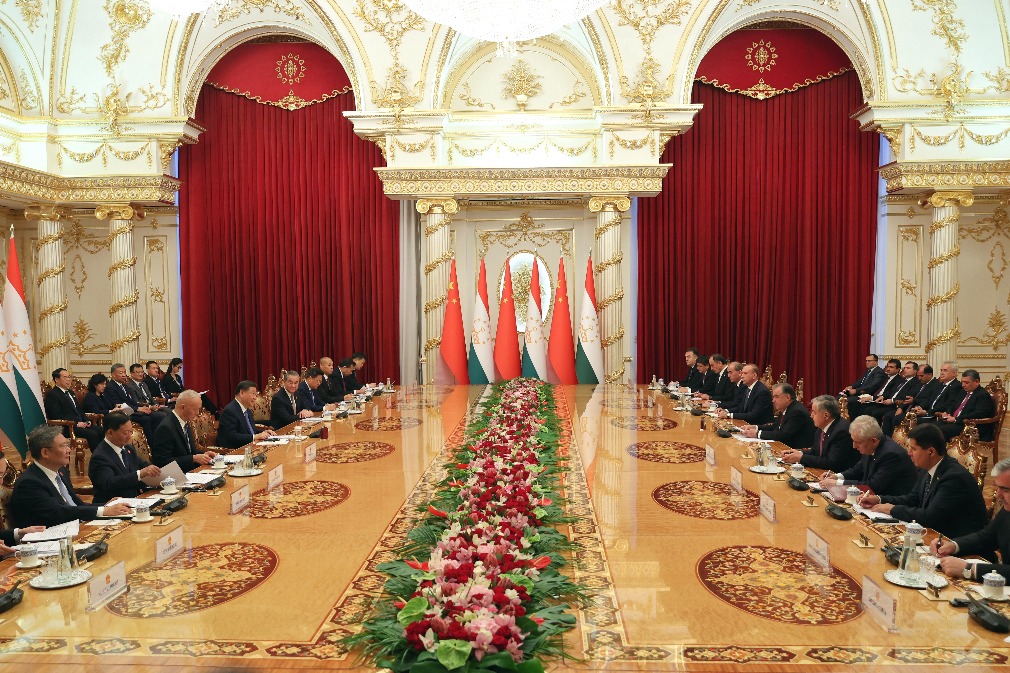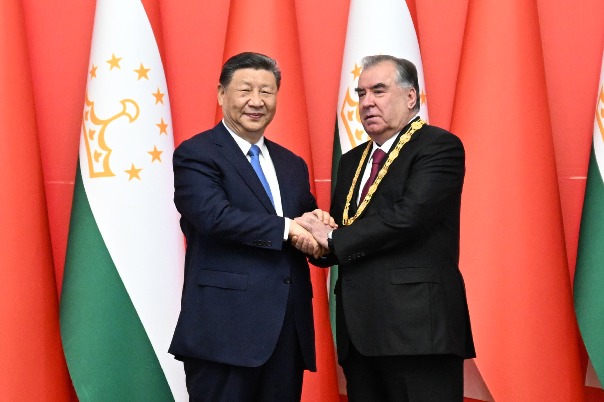China better be prepared for US 'no-landing'
By Guan Tao | China Daily | Updated: 2024-05-27 09:51

The assumption of a "soft landing "for the United States economy is a critical premise in China's economic situation assessment and policy decision-making this year. However, as the US' first quarter consumer price index and personal consumption expenditure data have exceeded expectations, which still indicates the possibility of inflation, coupled with a persistently tight labor market, the probability of a "no landing" scenario for the US economy has increased, giving rise to worldwide concerns.
Rising risks of 'no landing'
It's noteworthy that the earlier decline in US inflation was primarily due to falling commodity prices. Recently, as prices for major commodities such as crude oil, copper and aluminum have rebounded from their lows, there should be more upward pressure on commodity inflation.
A study by the San Francisco Fed last year indicated that half of the current US inflation pressure comes from the demand side, which means that without an economic slowdown and cooling consumer demand, inflation is unlikely to decline. Federal Reserve Chairman Jerome Powell has also said that further inflation reduction would require tolerating economic growth below trend levels.
However, the latest forecasts from the International Monetary Fund and the Fed have revised their US economic growth expectations for this year to 2.7 percent and 2.1 percent, respectively, both higher than the Fed's initial estimated potential growth rate of 1.8 percent.
In an era of high inflation and tight monetary policies, achieving a "soft landing" is a delicate task. Between August and October last year, the US experienced three consecutive months of share price and bond declines, which have, to a certain extent, helped the Fed implement rate hikes. However, the easing expectations at the end of the year led to simultaneous increases in its equity and bond markets again, helping relax the financial conditions and thereby heightening the risk of a second wave of inflation.
Implications for China
First, a "no landing" scenario would perpetuate a global dollar shortage. High US interest rates and a strong dollar will continue to attract international capital, exacerbating the global shortfall in international liquidity. This situation poses particular risks for fragile, low-income and high-debt emerging economies, increasing the likelihood of balance of payment and debt crises, and also threatening the safety of China's equity and debt assets in these economies.
Second, the tight global financial conditions under a strong greenback cycle will also suppress global economic growth and international capital flows, creating a challenging environment for China's foreign trade and investment.
Third, global risk asset values will be reevaluated. The Fed's earlier frequent though unexecuted signals for rate hikes have increased market risk tolerance and lowered risk premiums, contributing to record highs of US bourses.
As the probability of a "no landing" scenario rises, the market's revaluation of the Fed's tightening stance could lead to another round of valuation adjustments for US equities. Given that US shares serve as a bellwether for global risk assets, any sharp falls would stir concerns in global stock markets and affect trade in China's domestic capital markets. As China's stock market continues to open up, the impact is particularly significant, and should expand the marginal pricing influence of foreign capital on A shares.
Fourth, China may face some constraints in its monetary policy adjustment flexibility. The divergence in economic cycles and misalignment of monetary policies between China and the US have been believed to be major factors behind the widening negative interest rate difference and sustained pressure on the renminbi exchange rate.
This year, intensified macro-control efforts are needed to consolidate and enhance the positive economic recovery trend. High real interest rates are considered a significant constraint on China's economic recovery, and reducing financing costs is seen as an important monetary policy option. The shift in the Fed's rate policy is expected to open up room for China to cut its rates. But if such expectations are not met or exhibit a counterintuitive outcome, the adjustment space for China's monetary policy may in turn be constrained.
Fifth, "no landing" would also increase pressure on the renminbi exchange rate. The previous assumption that a Fed rate cut and a weaker dollar would benefit the renminbi exchange rate is likely to be proven wrong. A persistently strong or even significantly stronger dollar may even put downward pressure on the renminbi. In April, Asian currencies came under widespread pressure, with speculation about an "Asian financial crisis" and an "Asian currency defense war" resurging.
Last year, despite a slowdown in the pace and intensity of the Fed tightening under a "no landing" scenario, the spillover effects on China from the foreign exchange market exceeded those of the previous year, which suggests that even if the Fed does not raise rates this year, a prolonged tightening stance could still amplify spillover effects on China.
How to react
First, preemptive planning is more proactive and effective than mere predictions. Given the internal and external uncertainties and instabilities, it is essential to enhance the monitoring and analysis of both domestic and international situations. This involves conducting scenario analyses and stress tests to develop contingency plans and improve policy response capabilities. It's crucial to be prepared both mentally and operationally for all possible adverse scenarios. Additionally, we must not rule out the risk of the US economy suddenly stalling and falling into recession, for which we should also be prepared to avoid spillover harm.
Second, high-quality and sustainable growth serves as an ideal trump card and insurance policy for both rainy days and turbulent stretches. The country should go all the way to ensure actual economic growth does not fall below the average growth rate of the past four years, and ideally, it should converge to above 5 percent. Additionally, achieving growth that increases employment and revives inflation is crucial to bridging the gap between macro and microeconomic fundamentals — the strong start to the economy in the first quarter provides a solid foundation for this eventuality.
Furthermore, additional efforts are needed to prevent and mitigate external financial risks. With the accelerated two-way opening of China's financial sector, exposure to external financial risks has increased. It is necessary to comprehensively leverage the roles of market entities, regulatory bodies and local governments to fully understand the situation and implement targeted measures for specific enterprises.
Moreover, the country should actively attract more long-term international capital inflows. Analysis of the international balance of payment data indicates that current forces betting against the renminbi are not driven by panic devaluation from foreign entities, but by a slowdown or reversal of foreign capital inflows. International investors are concerned not about exchange rate fluctuations, but about the risk of "non-tradability" due to exchange rate rigidity.
The writer is global chief economist at BOC International.
The views don't necessarily reflect those of China Daily.
























